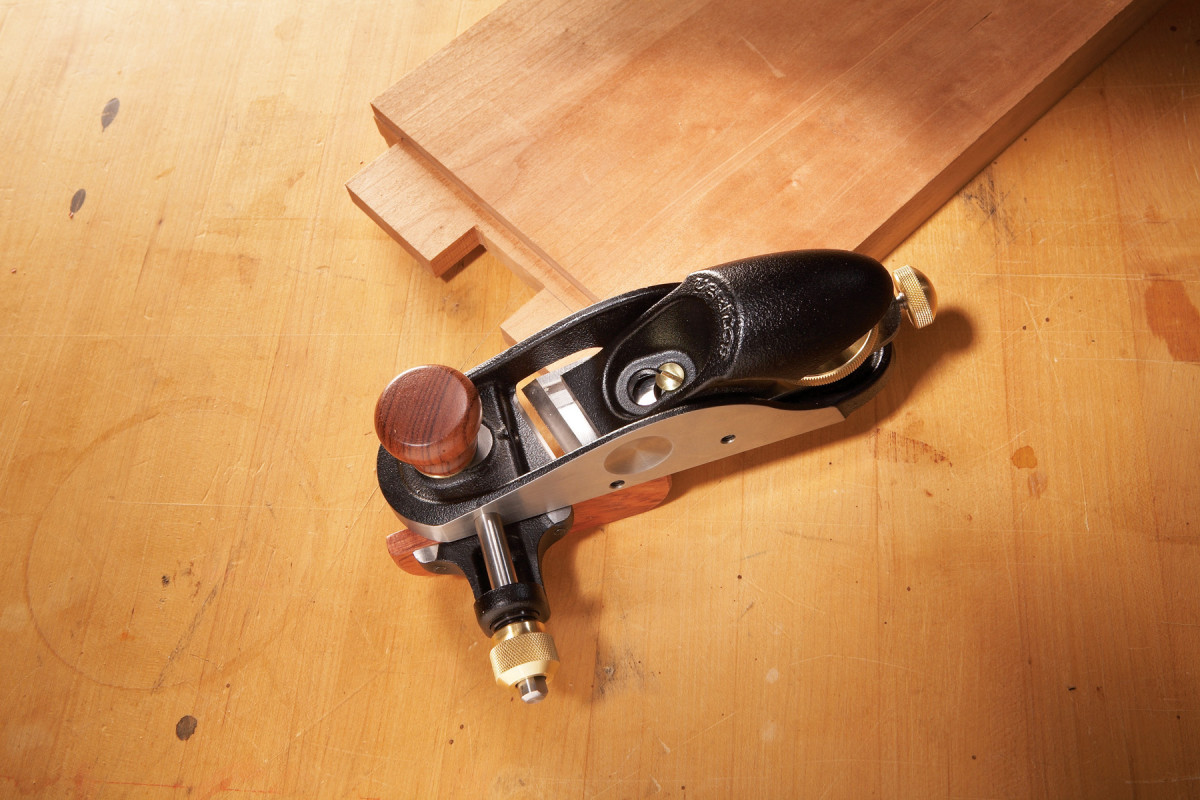We may receive a commission when you use our affiliate links. However, this does not impact our recommendations.

Modern hand planes continue to be popular, and this low-angle block plane excels at trimming tenons, rabbets, and end grain.
Tool: Skew Block Plane Buy Now
Manufacturer: Veritas
MSRP: $229
When you pick up the Veritas Skew Block Plane, you’ll notice that the blade is skewed at 15°, side to side. When using a regular plane, you’ve probably noted that holding it at a skewed angle to the work makes the plane easier to push. Skewing the blade—as this block plane does—produces the same effect.
How does that work? Consider this: It’s easier to ride a bike up a hill if you go on a slant, right? The lower the angle of attack, the less effort is required. The same is true when planing wood: The lower the blade’s angle of attack, the easier it is to push the plane. Skewing the blade, or the plane, essentially lowers the blade’s attack angle, just like skewing your bike to the face of that hill.
While this plane can perform all the functions of a standard block plane, such as trimming doors, it will really come in handy for paring tenons, when you only have to take off a shaving or two to make the joint fit. A standard plane won’t work, because it can’t cut right up to the tenon’s shoulder. This block plane will work, because it has one open side, like a rabbeting plane. It will take a shaving up to 1-1/2″ wide, so you can shave the entire width of most tenons in one pass, unlike a standard rabbet plane.
Additional features of the plane include an adjustable mouth, a removable fence, a retractable scoring spur, lateral adjustment, and a choice of A2 or O1 blades. It’s available in left- or right-hand versions.
Here are some supplies and tools we find essential in our everyday work around the shop. We may receive a commission from sales referred by our links; however, we have carefully selected these products for their usefulness and quality.






![Tooley Park Scriber Review [Discount Week of Feb 3 2025]](https://dev.popularwoodworking.com/wp-content/uploads/bfi_thumb/dummy-transparent-olcy6s63it1p9yp7uhusjas7c8kahafrhg9su7q9i0.png)


This is why I have always admired Lee Valley’s Veritas over Lie Nielsen. Lee Valley tries to improve upon the tool while Lie Nielsen just copies an old Stanley version.
Thanks, Chris. You have confirmed my suspicion that I don’t need this excellent plane. I have a pair of the Veritas Skew Rabbet planes (they look like fillisters to me) that work wonderfully. So this neat little guy would be pretty much redundant for me.
John should look at the Veritas skew rabbet. I replaced my Stanley 78 with this pair. Even though buying both of them is pricey by Veritas standards, it was worth it. They are the most flexible detail planes I have ever used. I love them.
By the way, I couldn’t find a review of the Veritas skew rabbets on Popular Woodworking. You MUST have done one!
John, there’s some information in the archives on this site:
http://www.popularwoodworking.com/techniques/joinery/essential-joinery-plane-the-moving-fillister
http://www.popularwoodworking.com/woodworking-blogs/chris-schwarz-blog/raring-to-rabbet-philly-planes-fillister
The Schwarz also did a review of the Veritas skew rabbet at: http://www.wkfinetools.com/contrib/cSchwarz/z_art/vSkewRabbet/vSkewRabbet-1.asp
I have been looking for a moving fillister plane. Any recommendations?
Thanks for your blog – I learn so much.
John
Looks like I just found my birthday present.
Thanks Chris.
Thanks for the thoughtful comments, Chris. I jumped on the early adopter bandwagon and ordered mine this afternoon before you posted this. I can’t wait until it arrives and I find out you’re right!